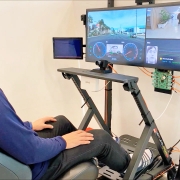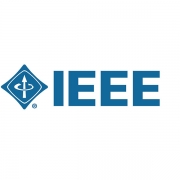Strategic Partnership with Trumpf for Optical Data Communications for Automotive
Joseph Pankert, VP Product Management at TRUMPF Photonic Components, and Rubén Pérez-Aranda, CTO at KDPOF, introduce our strategic partnership for automotive data communications solutions. Jointly, we pursue the goal of implementing state-of-the art optical data communications standards and solutions for the automotive industry. Therefore, TRUMPF and KDPOF are combining their knowledge in the field of components and networks for data communication.
“With our strategic partnership we are going one step further and aim to establish VCSEL and optical networks as indispensable part in future cars,” explained Rubén Pérez-Aranda, CTO at KDPOF. “Having a supplier like TRUMPF as a partner in working groups enrich the discussion with deep manufacturing and design knowledge of VCSEL and photodiodes components.”
Due to the push in the automotive branch towards autonomous driving, a large amount of data has to be processed in cars. Consequently, optical interconnects are required to manage the data flow, acting as a nervous system connecting sensors and electronic brains, while meeting tight electro-magnetic interference requirements. “After a long-term cooperation, it’s great to enter a strategic partnership with KDPOF now, combining our long-term expertise to shape the future of data communication within car networks,” said Joseph Pankert, VP Product Management at TRUMPF Photonic Components. “Our long-term studies have already proven that 980nm VCSELs can operate at much higher temperatures while maintaining excellent reliability. This is exactly what the automotive industry is demanding, and therefore we support the movement towards a new, long-wavelength standard”, Pankert added.
The Particularly Demanding Application in the Automotive Sector
Compared to datacenters, automotive applications require not only a much wider range of operating temperatures, ranging from minus 40 °C up to 125 °C, but also an interconnect length of even less than 40 meters. For superior robustness against wear-outs and random failures, 980nm VCSEL is recognized as the wavelength preferred to become the new standard. Next to performance characteristics, 980nm enters to existing OM3 fibers with only limited dispersion loss.
For more information, please see the joint press release.





 IEEE
IEEE TRUMPF
TRUMPF


